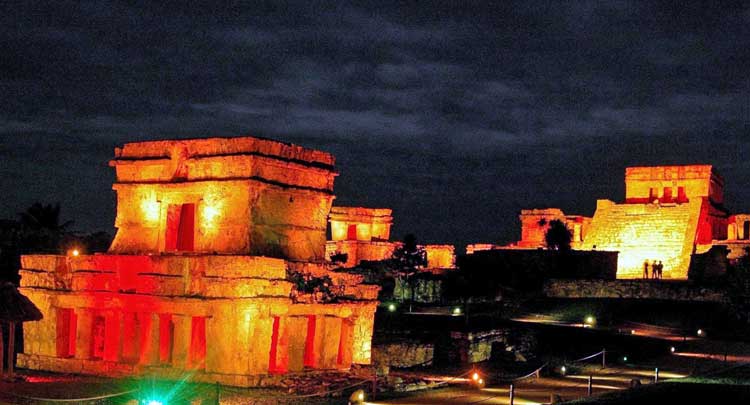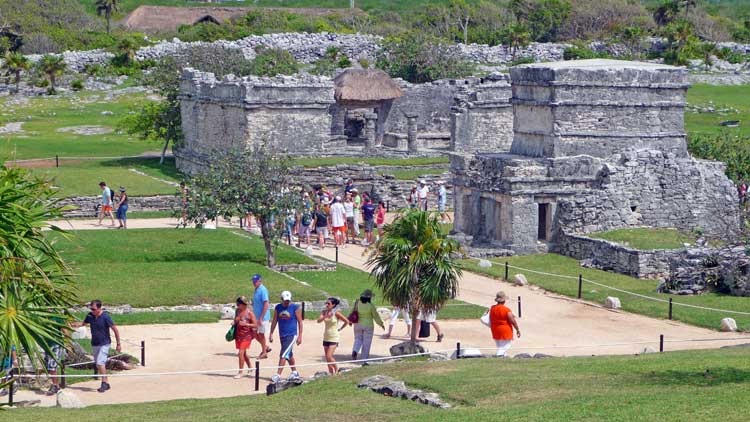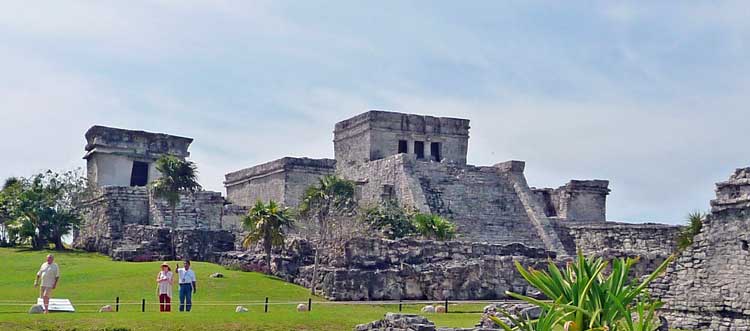Riviera Maya Part 1: Tulum is still Tulum

The clifftop city of Tulum stands like a silent sentry over the sugary beaches of the Caribbean 45 feet below. In the morning, when the first rays of the sun began bouncing off its crimson colored temples, shrines and towers, the city must have lit up like a fireball – perhaps explaining why it was originally called Zama, or City of the Dawn.
The ancient Mayan city must have been a show-stopper at night, too. Had the Spanish sailors who first spotted it in 1518 arrived after sundown, they'd have been treated to the sight of its buildings shimmering in the glow of torches atop pyramids and ceremonial towers.
 The city might have looked much like this at night. Photo courtesy of the Mexican Tourism Board.
The city might have looked much like this at night. Photo courtesy of the Mexican Tourism Board.For hundreds of years, Tulum thrived as the main trading port for the mega-city of Coba some 25 miles inland. It was home to as many as 75,000 people, mostly farmers, and it could have had 6,000 ceremonial, government and residential buildings spread over an area the size of Denver.
Historians say Tulum's beaches were usually packed with 30-foot-long canoes paddled there by merchants from across the Mayan empire as far away as Honduras. No wonder Tulum was a kind of Port of New York among the smaller Mayan ports – places such as Xel-Ha, Xcaret and Xaman Ha (now Playa del Carmen) – running down the Caribbean coast of eastern Mexico.
Fast forward to today, and the 70-mile-long strip of Caribbean beaches stretching from Cancun down to Tulum is the country's largest resort area, the Riviera Maya. And Xel-Ha, Playa del Carmen and the other old-time Mayan settlements along the coast have been turned into upscale hotel zones, ritzy residential enclaves, huge amusement parks and sprawling cities.
 As many as 5,000 visitors a day wander around Tulum.
As many as 5,000 visitors a day wander around Tulum. El Castillo is straight off the travel posters.
El Castillo is straight off the travel posters.Things are a lot different outside the site. Tulum City, centuries ago home to a few hundred farmers and temple builders, is now a modern-day city of 25,000 (and growing every day). Many are expatriates from the U.S. and Canada along with a good number of transplants from Germany, Spain and The Netherlands.
Visitors to Tulum typically arrive in tour groups from the 500 hotels in Cancun and along the Riviera Maya.
Staying there: Tourists who opt to spend a few days in the Tulum area have a choice of some 45 hotels either in town or on nearby beaches. They range from modest inns with rates as low as $60 a night to luxury resorts priced as high as $500 a night.
www.tibesarealty.com.mx
www.tibesarealty.com.mx/wordpress/
No hay comentarios:
Publicar un comentario